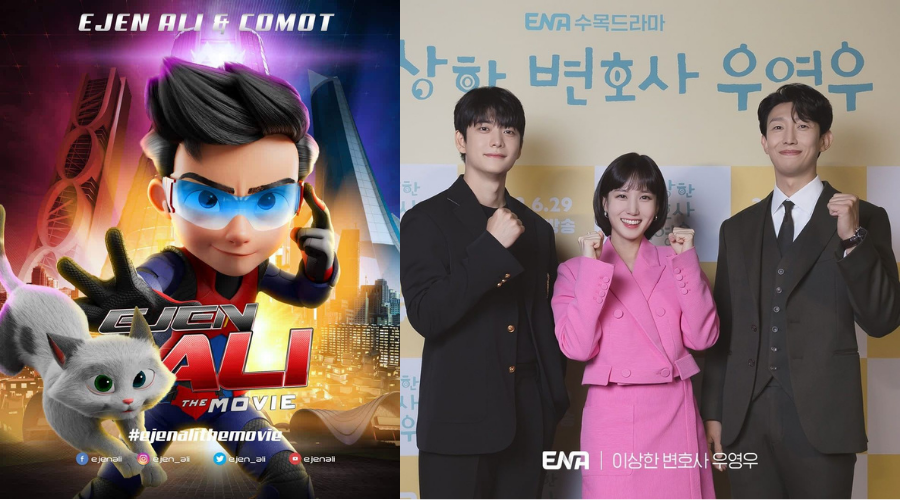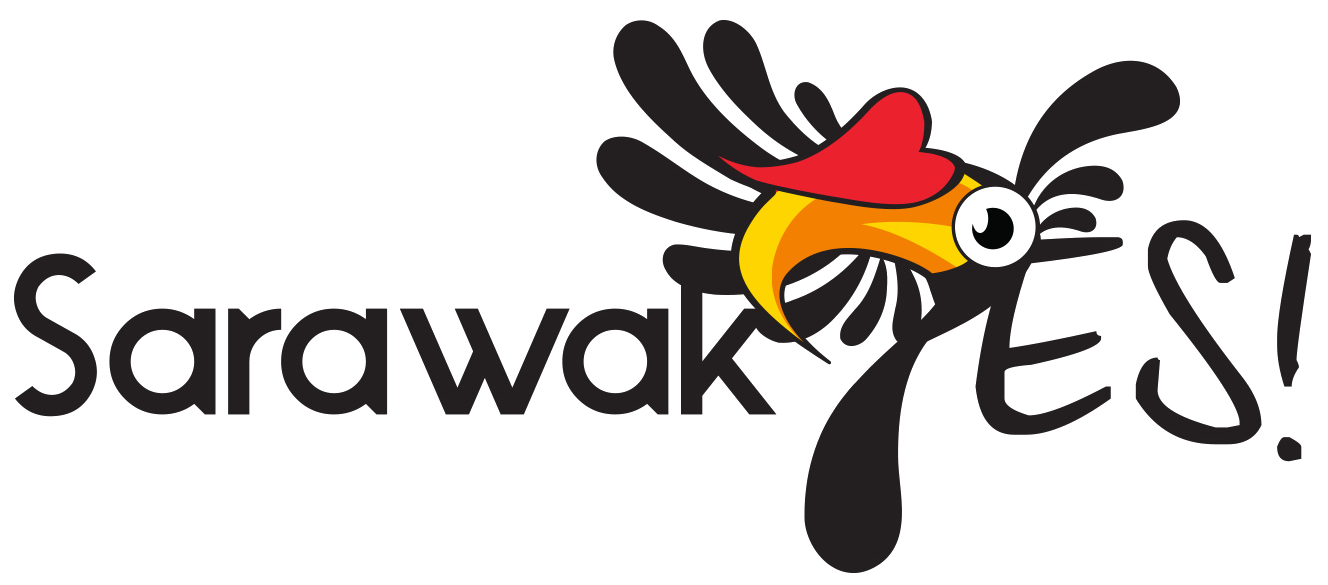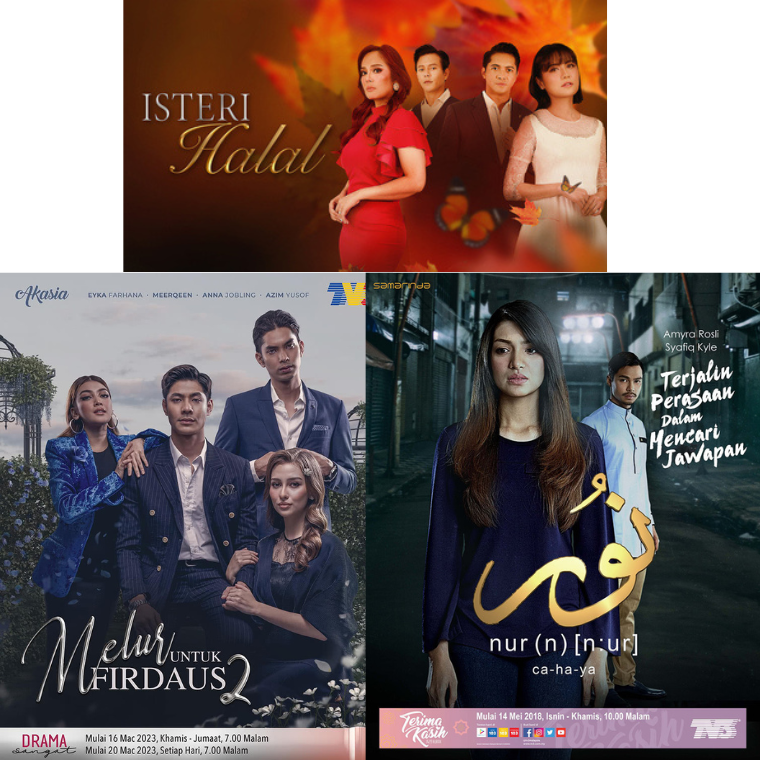In creative writing circles, budding scriptwriters are urged to “stand out”, to be daring, inventive, and push boundaries.
However, such innovative works are often overlooked by mainstream producers, who prioritise content aligned with proven audience preferences, such as romance, familial conflict, and supernatural themes.
So, where does this leave writers striving to bring fresh voices to the screen?
This very dilemma took centre stage at the forum “Skrip Tak Laku, Siapa Salah?” on 7 July 2025, where veterans Erma Fatima and Dato’ Hans Isaac highlighted the challenge of reconciling originality with market demands in today’s industry.
The Market’s Appetite for the Familiar
Audiences crave familiarity.
Mainstream viewers often stick to stories that feel safe and recognisable.
Nielsen Malaysia’s Q4 2024 report confirms that television dramas most successful in attracting audiences continue to rely on recurrent motifs: romantic entanglements, revenge dynamics, and familial discord.
These structures persist because they provide audiences with both predictability and emotional gratification.
For broadcasters and streaming services, the equation is simple: they’re in the business of drawing audiences.
While innovative or experimental scripts may generate prestige, they seldom provide predictable returns on investment.
As a result, executives often opt for content that is perceived as a safer investment.
This environment complicates the work of writers seeking originality.
A “unique” script might mean breaking away from standard formats.
For example, imagine a dystopian story set in a Bidayuh longhouse or a psychological drama about a Sarawakian teen navigating digital isolation. Creative?
Absolutely.
Marketable?
Less so.
Industry Perspectives: Passion or Profit?
At the Skrip Tak Laku, Siapa Salah? forum, Erma Fatima highlighted a recurring challenge in Malaysia’s creative sector: scripts with distinctive or experimental elements often fail to meet the preferences of mainstream broadcasters or large-scale production stakeholders.
For many writers, this disconnect is disheartening — they’re told to innovate, but the market rewards familiarity.
In response, Dato’ Hans Isaac underscored the importance of aligning intent with strategy.
Profit-oriented projects, he argued, must be inherently marketable.
By contrast, niche or experimental works are often better suited for festivals, streaming platforms, or arthouse venues where originality is prized over mass appeal.
Dato’ Hans Isaac further stressed the critical role of marketing investment for atypical projects seeking wide release.
The promotional spend should be at least double or triple the production cost.
Without this, even standout ideas risk being overlooked.
This is particularly pertinent, given FINAS (2025) data showing that Malaysian productions dedicate only 18% of their budgets to marketing, which is significantly below the global average of 30%–40%.
This underinvestment hampers audience reach even for high-quality, creatively ambitious films.
So, What’s the Solution?
If writing something both daring and mainstream feels impossible, is there another path?
Globally, successful creators often integrate distinctive cultural or thematic concepts within familiar narrative structures.
This method maintains accessibility for mainstream audiences while allowing space for creative originality.
A legal drama with a protagonist on the autism spectrum. The format is recognizable—courtroom drama—but the character and perspective are fresh and engaging.

Regional & Global Examples:
Extraordinary Attorney Woo (South Korea, 2022)
A courtroom series led by a lawyer on the autism spectrum: the format is familiar, but the lens is refreshingly new.
The Queen’s Gambit (USA, 2020)
Despite its focus on chess, the series employs a sports drama framework centred on an underdog journey, ensuring accessibility and appeal to a broader audience.
Parasite (South Korea, 2019)
A thriller that doubles as a sharp critique of class divides — gripping tension meets biting social commentary.
Ejen Ali: The Movie (Malaysia, 2019)
An action-packed spy animation laced with Malaysian cultural flavour.
It’s the kind of story the world knows, told with a local twist—and it clicked big at the box office.
These stories highlight how originality can coexist with traditional frameworks, leveraging genre conventions as a vehicle for fresh ideas.
Understanding Your Audience Without Losing Your Voice
Marketability does not equate to compromising creativity; rather, it involves framing originality in a way that resonates.
The best scripts connect because they speak to the audience’s values, humour, and everyday realities.
In Sarawak, this could involve embedding narratives of rural-urban migration, indigenous folklore, or local dialects within popular genres such as romance or comedy.
Additionally, instead of reacting to transient industry trends, writers benefit from prioritising authentic representation and utilising insights from box office performance, online engagement, or informal feedback loops to refine their work.
By anchoring innovation in familiar storytelling and cultural authenticity, Sarawak’s writers can achieve both freshness and accessibility.
Finding Your Middle Ground
For Sarawakian writers, the future is not about choosing between passion and market—it’s about balance.
While passion projects and commercially focused scripts can coexist, each comes with its mindset and approach.
Success demands adaptability: refining storytelling methods, understanding audience preferences, and leveraging state and national support frameworks.
Such skills allow writers to thrive across contexts, from mainstream broadcasting to independent film festivals.
As highlighted during the forum, certain scripts will not achieve mainstream viability, yet their artistic value remains intact.
That’s fine.
What matters is clarity of purpose: are you writing to express yourself, or to sell?
Both are valid.
The real question is, which goal are you pursuing today?
References:
- Skrip Tak Laku, Siapa Salah? (2025) Industry forum, 7 July. Paraphrased insights from Erma Fatima and Dato’ Hans Isaac
- Nielsen Malaysia Q4 2024 Report: TV Viewership Trends & Top Programmes
- FINAS Annual Industry Report
- MyCreative Ventures Sdn. Bhd Report 2024

